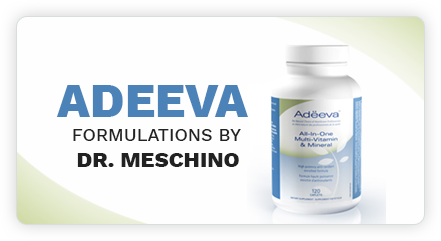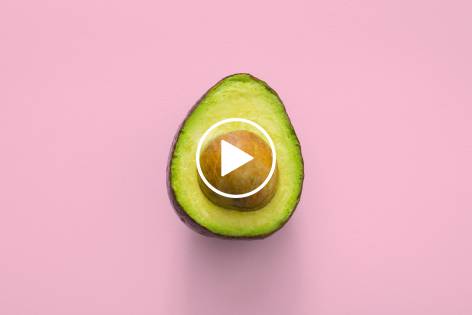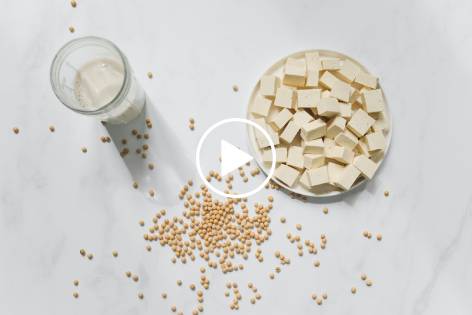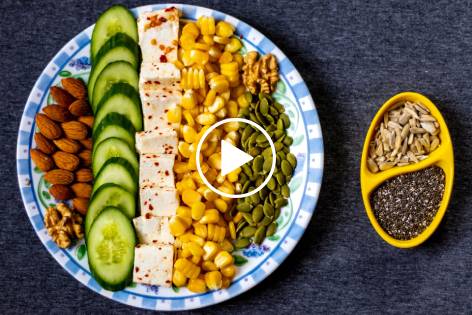
LMU 134 – Unlocking Longevity: Blood and Urine Clues to a Vibrant Life
Source: The Journal of Gerontology (June 2012)
Lifestyle Medicine Update (July 6, 2019)
Introduction:
In the symphony of life, we all yearn for a prolonged and thriving existence—a journey marked by vitality, free from ailments, and brimming with vitality. In this pursuit, a groundbreaking study published in The Journal of Gerontology a few years ago uncovered a trio of blood and urine tests that serve as potent predictors of mobility disability and mortality as individuals advance in age. With data drawn from the Health Aging and Body Composition Study, encompassing over 2,000 non-disabled older individuals, this study illuminated a path to longevity that goes beyond the mere passage of years.
The Power of Insight: Unveiling Predictive Markers
Over the span of 11 to 12 years, this study embarked on a journey of discovery, delving into the lives of community-dwelling older individuals. Through meticulous blood and urine analyses, a trio of key indicators emerged as beacons of potential outcomes: Interleukin-6—an inflammatory chemical, fat oxidation products (8-iso-prostaglandin F24), and chemicals associated with heightened blood stickiness (11-dehydro-thromboxane B2). The revelations were profound, transcending gender boundaries.
Interleukin-6: The Inflammatory Harbinger
Drawing a vivid connection between inflammation and longevity, the study unveiled a significant correlation between higher blood levels of Interleukin-6 and augmented risks of mobility disability, severe mobility disability, and mortality. This inflammatory chemical, often associated with chronic diseases, emerged as a compass that could guide individuals away from the perils of compromised mobility and into the realm of health and vitality.
Unveiling Urine Clues: Fat Oxidation Products and Blood Stickiness
Venturing further, the study plunged into the realm of urine analysis, spotlighting fat oxidation products (8-iso-prostaglandin F24) and chemicals synonymous with increased blood stickiness (11-dehydro-thromboxane B2). The findings painted a sobering picture—higher urine levels of these compounds correlated with a significantly elevated risk of mortality. As these insights crystallize, the path to lasting wellness gains clarity.
Navigating the Terrain: Lifestyle and Longevity
As the curtain lifts on these predictive markers, an imperative question arises—how can individuals shape their destinies? The answer lies in the interplay of lifestyle and longevity. Dietary choices become architects of well-being, with the ability to influence blood and urine markers that chart one’s course. Steering clear of excess weight, embracing regular exercise, and avoiding trans-fats and saturated fats emerge as pillars of vitality. A diet rich in lean proteins such as poultry, fish, soy, and plant-based alternatives empowers individuals to lower inflammatory chemicals like Interleukin-6 and mitigate blood platelet stickiness.
Nutritional Allies: Fruits, Vegetables, and Legumes
The symphony of well-being extends to the realm of nutrition, where fruits, vegetables, and legumes emerge as virtuous allies. Laden with antioxidants, these dietary gems wield the power to curtail the release of inflammatory chemicals and fat oxidation products, fostering an environment of thriving health.
Aging Unveiled: Nurturing Longevity
In the lexicon of aging, a vital lesson emerges—holistic wellness is the key to a thriving existence. The canvas of longevity takes shape when healthy eating, regular exercise, and ideal weight converge. With these components harmoniously interwoven, blood and urine markers that foretell mobility disability and mortality gravitate towards a realm of optimal values. While the journey is not devoid of challenges, the dividends reaped over time are nothing short of transformational. A refrain echoes—the choices we make pave the way for a life of vibrancy.
Beyond the Horizon: The Essence of Wellness
In the quest for longevity, a tapestry of choices unravels—a tapestry woven from the threads of healthy living. While the markers explored in this study shed light on the path, the compass to vitality transcends mere figures. A smoke-free existence and a mindful approach to alcohol encompass the nuances of wellness. The narrative of longevity demands nuance, reflecting the myriad choices that shape our destiny.
References:
Cesari M et al. Oxidative damage, platelet activation, and inflammation to predict mobility disability and mortality in older persons: Results from the Health Aging and Body Composition Study. The Journal of Gerontology Series A, Volume 67A, Issue 6. June 2012: pages 671-676.
[https://academic.oup.com/biomedgerontology/article/67A/6/671/583247](https://academic.oup.com/biomedgerontology/article/67A/6/671/583247)
Eat Smart, Live Well, Look Great,
Dr. Meschino
Introduction:
In the symphony of life, we all yearn for a prolonged and thriving existence—a journey marked by vitality, free from ailments, and brimming with vitality. In this pursuit, a groundbreaking study published in The Journal of Gerontology a few years ago uncovered a trio of blood and urine tests that serve as potent predictors of mobility disability and mortality as individuals advance in age. With data drawn from the Health Aging and Body Composition Study, encompassing over 2,000 non-disabled older individuals, this study illuminated a path to longevity that goes beyond the mere passage of years.
The Power of Insight: Unveiling Predictive Markers
Over the span of 11 to 12 years, this study embarked on a journey of discovery, delving into the lives of community-dwelling older individuals. Through meticulous blood and urine analyses, a trio of key indicators emerged as beacons of potential outcomes: Interleukin-6—an inflammatory chemical, fat oxidation products (8-iso-prostaglandin F24), and chemicals associated with heightened blood stickiness (11-dehydro-thromboxane B2). The revelations were profound, transcending gender boundaries.
Interleukin-6: The Inflammatory Harbinger
Drawing a vivid connection between inflammation and longevity, the study unveiled a significant correlation between higher blood levels of Interleukin-6 and augmented risks of mobility disability, severe mobility disability, and mortality. This inflammatory chemical, often associated with chronic diseases, emerged as a compass that could guide individuals away from the perils of compromised mobility and into the realm of health and vitality.
Unveiling Urine Clues: Fat Oxidation Products and Blood Stickiness
Venturing further, the study plunged into the realm of urine analysis, spotlighting fat oxidation products (8-iso-prostaglandin F24) and chemicals synonymous with increased blood stickiness (11-dehydro-thromboxane B2). The findings painted a sobering picture—higher urine levels of these compounds correlated with a significantly elevated risk of mortality. As these insights crystallize, the path to lasting wellness gains clarity.
Navigating the Terrain: Lifestyle and Longevity
As the curtain lifts on these predictive markers, an imperative question arises—how can individuals shape their destinies? The answer lies in the interplay of lifestyle and longevity. Dietary choices become architects of well-being, with the ability to influence blood and urine markers that chart one’s course. Steering clear of excess weight, embracing regular exercise, and avoiding trans-fats and saturated fats emerge as pillars of vitality. A diet rich in lean proteins such as poultry, fish, soy, and plant-based alternatives empowers individuals to lower inflammatory chemicals like Interleukin-6 and mitigate blood platelet stickiness.
Nutritional Allies: Fruits, Vegetables, and Legumes
The symphony of well-being extends to the realm of nutrition, where fruits, vegetables, and legumes emerge as virtuous allies. Laden with antioxidants, these dietary gems wield the power to curtail the release of inflammatory chemicals and fat oxidation products, fostering an environment of thriving health.
Aging Unveiled: Nurturing Longevity
In the lexicon of aging, a vital lesson emerges—holistic wellness is the key to a thriving existence. The canvas of longevity takes shape when healthy eating, regular exercise, and ideal weight converge. With these components harmoniously interwoven, blood and urine markers that foretell mobility disability and mortality gravitate towards a realm of optimal values. While the journey is not devoid of challenges, the dividends reaped over time are nothing short of transformational. A refrain echoes—the choices we make pave the way for a life of vibrancy.
Beyond the Horizon: The Essence of Wellness
In the quest for longevity, a tapestry of choices unravels—a tapestry woven from the threads of healthy living. While the markers explored in this study shed light on the path, the compass to vitality transcends mere figures. A smoke-free existence and a mindful approach to alcohol encompass the nuances of wellness. The narrative of longevity demands nuance, reflecting the myriad choices that shape our destiny.
References:
Cesari M et al. Oxidative damage, platelet activation, and inflammation to predict mobility disability and mortality in older persons: Results from the Health Aging and Body Composition Study. The Journal of Gerontology Series A, Volume 67A, Issue 6. June 2012: pages 671-676.
[https://academic.oup.com/biomedgerontology/article/67A/6/671/583247](https://academic.oup.com/biomedgerontology/article/67A/6/671/583247)
Eat Smart, Live Well, Look Great,
Dr. Meschino

Dr. James Meschino
ABOUT THE AUTHOR
Dr. James Meschino, DC, MS, ROHP, is an educator, author, and researcher having lectured to thousands of healthcare professionals across North America. He holds a Master’s Degree in Science with specialties in human nutrition and biology and is recognized as an expert in the field of nutrition, anti-aging, fitness, and wellness as well as the author of numerous books.










